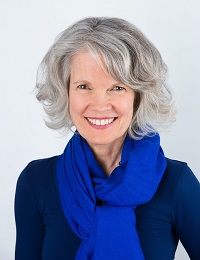Blog Posts | April 11, 2017
Share ThisBy Dr. Kathryn K. Matthew
IMLS Director
This nationwide effort gives us a bird’s eye view of dozens of local efforts that have worked, often beyond the expectations of even the LAMs involved. We like that IMLS has always focused its efforts on strengthening the nation’s communities by supporting the transformational power of libraries, archives and museums (LAMs) to change lives and improve neighborhoods and cities.. We like it when communities sparkle, as the song goes “from sea to shining sea.”
For the past year we have watched, nudged, listened and encouraged LAMs to address the needs of veterans and their families. From those conversations and observations arose our Community Salute initiative. Our learnings from the LAM networks, funders, researchers and organizations providing services to veterans have resulted in a series of resource documents. We hope that you and others learn from these ideas, not just about veterans and military families, but how to align efforts (any efforts) around community change. Many of the approaches within these resource documents draw from organizations and practitioners with years of community development experience.
Aside from these resources we have been discussing and suggesting another way to determine if your community-focused project measures up. Driven by the desire for alignment of many organizations, not just LAMs, in each community there is much talk of "collective impact." You’ve heard of Collective Impact (that is, with the big “C”). Cincinnati put the big “C” in Collective Impact by uniting literally hundreds of organizations in their efforts to address specific education goals. They developed metrics that all participating agencies used and deployed “backbone” organizations, wrap around services, and “success networks” to permeate an educational ecosystem. The entire educational community debated, discussed and came together to focus their efforts and resources on the student achievement crisis.
We have seen first-hand many little “c” collective impact efforts that have been just as successful. You do not need to label your effort as Big “C” to gain our support or encouragement. While you might imagine that with so many veterans organizations in your community that only big “C” Collective Impact would work, we have also seen many little “c” successes. It all depends on your truly understanding your local context and finding the right partners.
We have learned that, rather than waiting to figure out how to engage in a fully formed Collective Impact effort like Cincinnati’s, you should get started and see where your community change efforts lead. Perhaps it makes more sense to start by taking a small risk with one of your proven programs and to collaborate with a few experienced partners who work in veterans services or are veterans groups. Then, observe, listen, evaluate, adapt and keep moving forward. Perhaps you may eventually move from “c” to shining “C” as the conditions change around your work.
As you begin, look over these five Community Salute resources, try some of the organizing and innovation-inspiring techniques, such as asset mapping, data visualizations, constituent journey mapping, and stakeholder/actor analyses. Perhaps look at earlier Community Catalyst blogs to understand these techniques more deeply. See which work for you. We have learned through our network of LAMs and from your informal feedback that there are many avenues to success.
Write us at veterans@imls.gov. We want to hear your stories about how you are reaching out to leverage veterans’ strengths and to meet the needs of veterans and military families.
Also please do let us know how these Community Salute resources are working for you.

About the Author
Dr. Kathryn K. Matthew was confirmed by the Senate in September 2015 as the 5th director of the Institute of Museum and Library Services.
